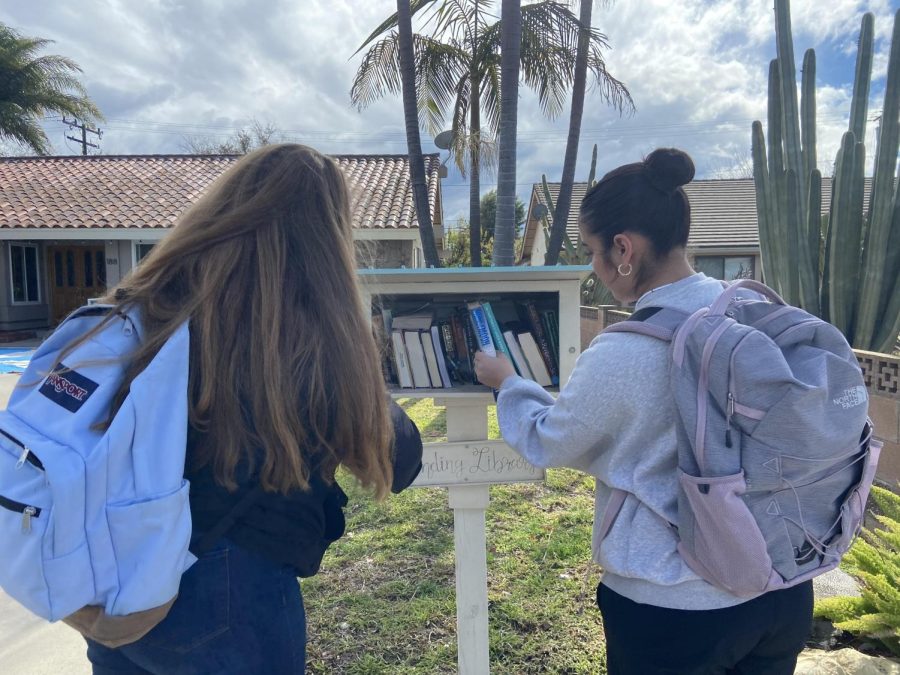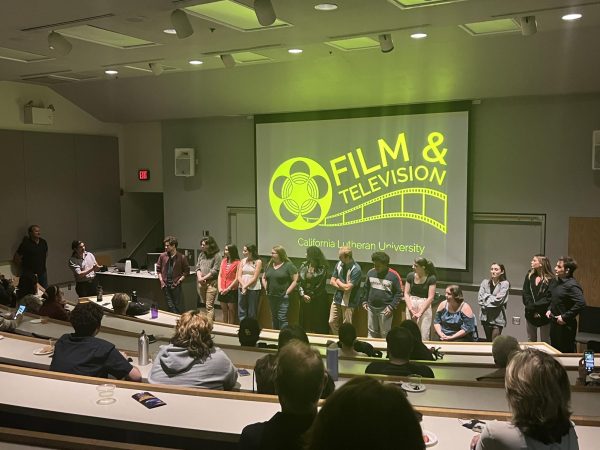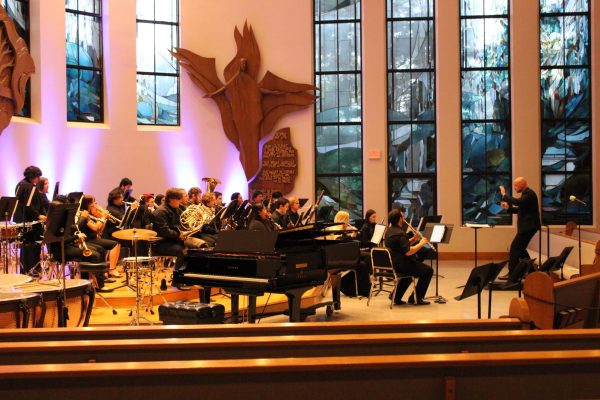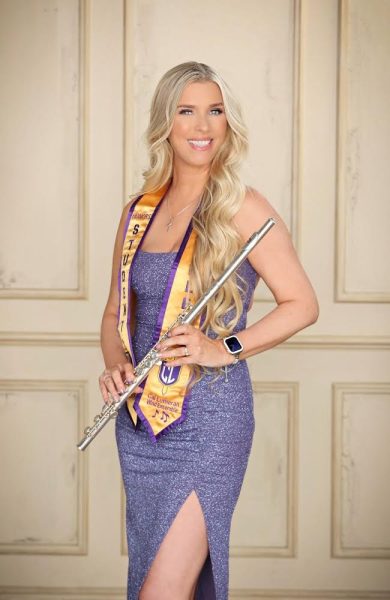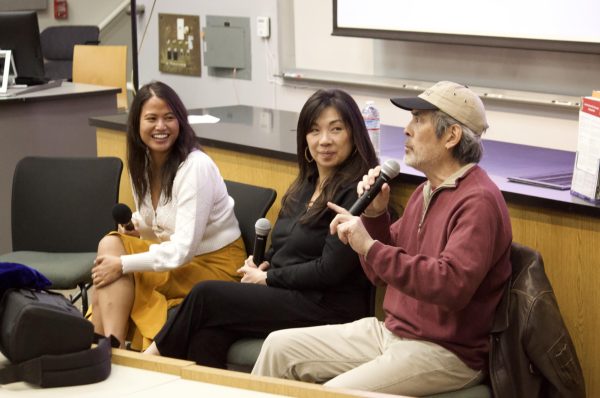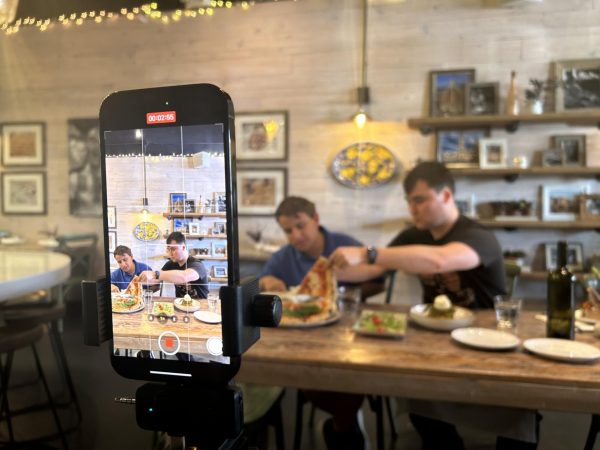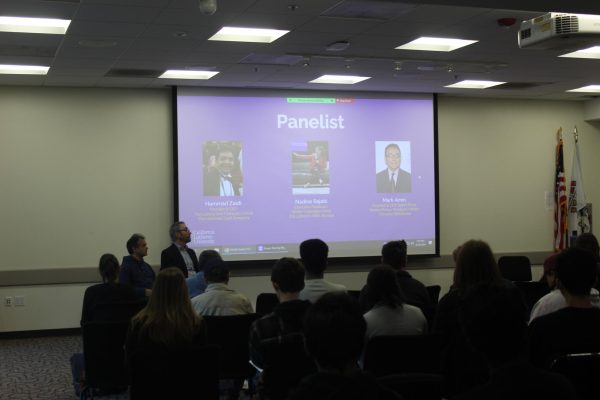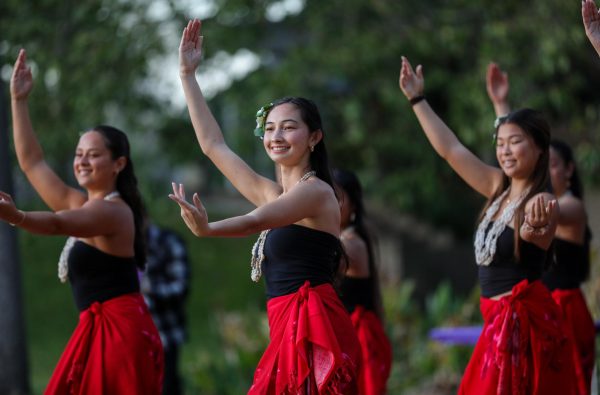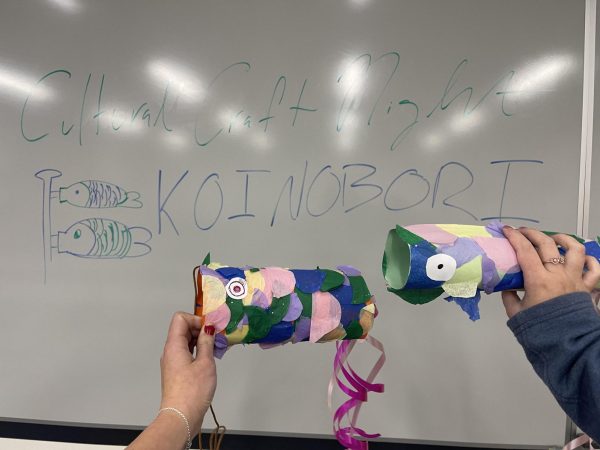The Lending Library is open to the community
Photo by Kacie de Silva - Reporter
California Lutheran University junior Ashley Darr (left) and senior Valerie Tovar (right) browse books at the Lending Library on Faculty Street. Rev. Scott Maxwell-Doherty said, “If it brings a little joy, we’re in good shape.”
February 14, 2023
Local readers can drop off, borrow or take books from the Lending Library outside the Rev. Melissa Maxwell-Doherty and the Rev. Scott Maxwell-Doherty’s house with the dolphin mailbox on Faculty Street in Thousand Oaks.
Scott Maxwell-Doherty said that while he and Melissa Maxwell-Doherty were on vacation, they often went to local lending libraries.
“Melissa is a voracious reader,” Scott Maxwell-Doherty said. “We would find these little spots. She’d grab three or four books and polish them off pretty quickly and then we’d go back again.”
Melissa Maxwell-Doherty said in a Zoom interview that at some point before the pandemic, she and Scott Maxwell-Doherty returned from a vacation.
“I said to my husband: I’d like a lending library,’ and so he built one for me. My colleague Caeli Koizumi… calligraphed a beautiful sign and she gave it to us,” Melissa Maxwell-Doherty said.
Regarding the design for the roof of their Lending Library, Scott Maxwell-Doherty said the roofline was inspired by Ullman Commons and the newer residence halls on campus.
Melissa Maxwell-Doherty said that the Lending Library is open to anyone in the community. She said she has seen students and dog walkers take books, and her neighbor puts books in there from time to time.
“Sometimes children in the neighborhood I believe have brought children’s books. As I get books, as I read them, I put them out,” Melissa Maxwell-Doherty said.
She said she checks to see what books have not moved at least once a month and takes those books to a local thrift store so someone else can use those books when the Lending Library gets full.
Melissa Maxwell-Doherty said there tend to be around 20 books in there at a time, and they are usually non-academic novels. The Lending Library rarely, if ever, has academic textbooks and novels.
Leanna Pagano, librarian and manager of resource sharing and course reserves, said in a Zoom interview, “I think it’s a great idea to have these student-led libraries going, but what I think gets lost is the positive aspect of having a centralized location. Students might hear through the grapevine: ‘Oh, this textbook is over here,’ but it’s not always gonna be there. So, they are going to have to continue to go to this Lending Library to see if it’s available.”
The Lending Library was created by Melissa and Scott Maxwell-Doherty, but community members can contribute to and take from it.
Meghan Kwast, librarian and head of collection management services, said in a Zoom interview that students can weigh the pros and cons of visiting the Lending Library or the Pearson Library. In the case of Pearson Library, Kwast said the library has a catalog that allows you to search and see if a book is there, which is more consistent and reliable.
“No one should feel like they are excluded from a class or career trajectory based on… affordability. A course reserve collection or a student-led initiative regarding access to textbooks means that there are options open for students who might otherwise feel limited in their academic endeavors,” Kwast said.
Pagano said that the Course Reserves Collection contains free materials for readers, however, there is still a cost to creating the Course Reserves Collection. According to Pagano and the Pearson Library website, there are also Open Educational Resources that are “publicly accessible digital materials such as books, articles, media files, etc.”
Kwast said that as the captive audience for textbooks has increased, not only is the price increased for students but it’s also increased for libraries.
“We’re having to pay… five times, generally speaking, as much as a single user student license to just get any access to a textbook, particularly electronically,” Kwast said. “When we get an e-book, that’s a license for a limited time, which means we’re gonna have to pay usually that five-times increased cost within three years again to maintain access to books.”
Pagano said that the Pearson Library makes copies of textbooks available based on donations and inquiries from students, or faculty who implement open education resource textbooks in their classes because they recognize that the cost of textbooks is not always feasible for students to purchase.
“I recognize we do have limitations because a lot of our textbooks can only be used during our operating hours, but we have a lot of students who come in during our operating hours and utilize those textbooks,” Pagano said.
Pagano said that students and faculty can learn how to navigate the Pearson library’s catalog, and take steps if a textbook is not available, at the course reserves page here.
This article was updated at 1:20 p.m. on Feb. 15 to clarify that the Lending Library is not student-run, but created and run by Melissa and Scott Maxwell-Doherty as well as that it normally has non-academic novels and does not typically have textbooks or other academic materials. Also, it was updated to resolve any confusion between the Course Reserve Collection and the Open Educational Recourses.

